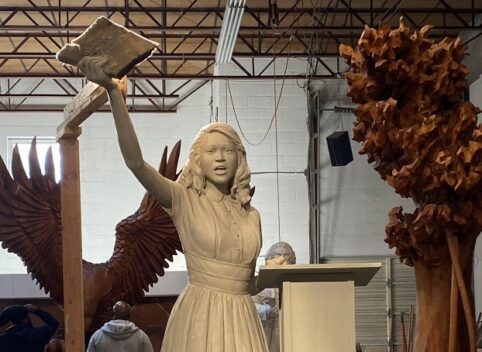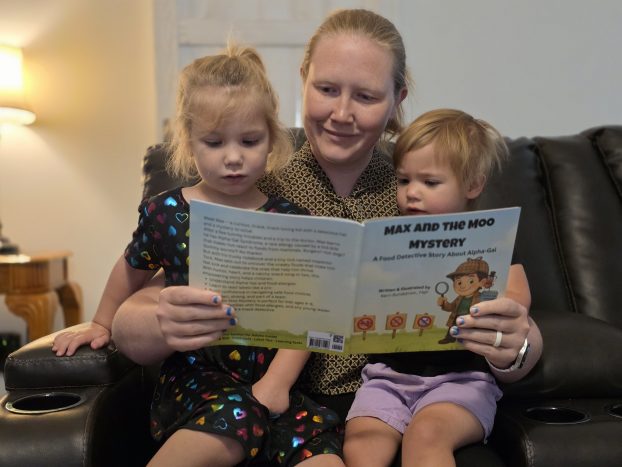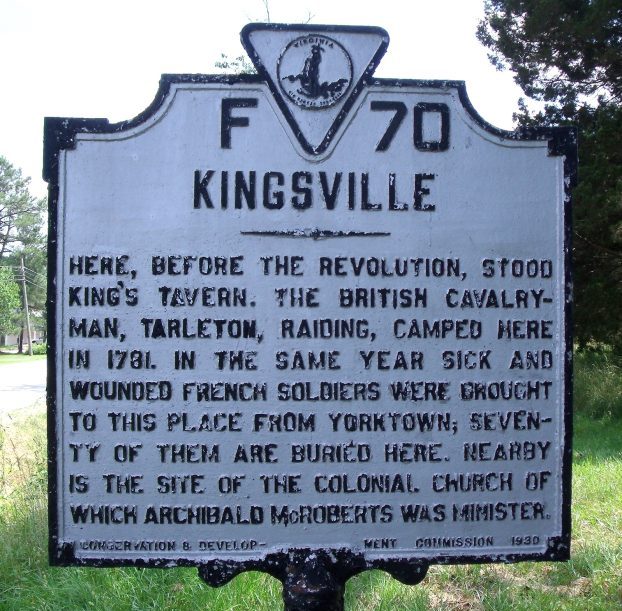Commission approves Barbara Johns statue. What’s the next step?
Published 11:31 am Friday, March 1, 2024
|
Getting your Trinity Audio player ready...
|
Joan Johns Cobbs just wanted to say thanks. Speaking to the Commission for Historical Statues, she thanked the group for honoring her sister, Barbara Rose Johns. She also thanked the sculptor, Steven Weitzman, for his work. But above all, she thanked the Commission as a whole for approving her sister’s statue, which is now one step closer to residing in the U.S. Capitol.
“We were allowed to view the statue many times and [Weitzman] indulged us in changing the face, the hair, the socks, the shoes, the dress,” Cobbs said. “There were a lot of changes and we appreciate him allowing us to put our two cents in for how it should look.”
And now we see what the final version of the statue honoring Cobbs’ sister will look like. It’s been a lengthy process. In December 2020, the Commission for Historical Statues in the United States Capitol voted to replace a statue of Robert E. Lee, deciding one of the Farmville civil rights leader should represent Virginia. Two statues represent each state in the Statuary Hall of the Capitol. Virginia’s other statue is of George Washington.
Trending
But the work to put Barbara Rose Johns in that second space stalled, due to the pandemic. Now however, things are moving forward again. Johns was chosen from a group of five finalists, to be represented in the U.S. Capitol. Commission members said they decided on Johns because of her connection to the Supreme Court case Brown v. Board of Education, which found that racial segregation in schools is unconstitutional.
What happens next for Barbara Johns statue?
Preliminary approval of a much smaller version of the statue was given back in September. And over the last few months, members of the commission, along with Cobbs and the rest of her family, have been visiting the 72-year-old Weitzman as he designed the final version. The black granite base is three feet tall, then the statue of Johns herself will be seven feet. All total, from the bottom of her feet to the top of her head, the statue stands at 10 feet, five inches. There is no label of the Moton School on the statue, because Moton Museum officials confirmed to the Commission the school had no insignia or other logo at the time.
And to be clear, while we say this is the final version, there’s still a few more steps to take. First, this version has to be approved by the Office of the Architect of the U.S. Capitol. That means sending over photos of the approved model, the pedestal and inscriptions. Once the Architect signs off, it goes to a foundry in Chester, Pennsylvania, as this version is in clay. The foundry will transform it into bronze, after which it’ll be photographed again, looking for one final approval from the Office of the Architect.
“[The foundry] told me that they can have the finished bronze by the end of summer, beginning of fall,” Weitzman said, giving a timeline of when we could possibly this move forward. After that, it’s time for Congress to get involved.
When will it be unveiled?
So the big question in all of this is when will the statue be unveiled and presented to the public? That’s a good question.
“After we get the [bronze] approved, then hopefully we can move forward to coordinate the unveiling,” said Julie Langan. She works as Virginia’s State Historic Preservation Officer, in charge of the Department of Historic Resources and chairman of this commission. She explained that the process could slow down some, depending on what’s happening in Congress.
Trending
“It is the Speaker (of the House) who will determine the date of the unveiling,” Langan said.
https://www.instagram.com/p/C3-q1uKupPQ/?hl=en&img_index=1
Who was Barbara Johns?
While long-time residents may remember her, this is for some of our newer readers. Barbara Rose Johns was a 16-year-old high school student who attended Robert Russa Moton High School, the first free-standing segregated high school for African-American students in Prince Edward County. Originally built in 1939, its max capacity was to hold exactly 180 students, but had over 477. As such, there was overcrowding in the classrooms, along with subpar conditions and hand-me-down education materials.
Johns was one of the first students to do something about that. On April 23, 1951, after months of deliberation and meditation, she decided to lead a strike.
That protest eventually led to a court case being filed. That case was led by Oliver Hill and Spottswood Robinson, who were attorneys in the Richmond branch of the National Association for the Advancement of Colored People (NAACP). However, the attorneys took some convincing to take the job.
When the students were on strike, Rev. Francis Griffin got Barbara Johns and one of her classmates, Carrie Stokes, in contact with those attorneys. They wrote a letter, pleading with them to take their case.The attorneys were not interested in Prince Edward County. They were actually trying to take a case out in Pulaski, west of here. But they needed to drive through Farmville to get to Pulaski anyway, so they were convinced to stop and hear the students out.
One thousand people packed Farmville’s First Baptist Church for that meeting, which happened on May 3, 1951. Through the persuasion of Johns and Rev. Griffin, as well as the other community members who came out that day, the attorneys agreed to take the case.
The case eventually went to federal court and merged with a number of others out of South Carolina, Delaware, Washington D.C. and Topeka, Kansas. Those five cases combined to form Brown v. Board of Education, using the name of Oliver Brown, who was a plaintiff in the Kansas case.
More about her history
Barbara Rose Johns watched all of that play out from a different state, however. The protest she started and the court case that followed drew racist threats. Fearing for her safety, the Johns’ family decided she needed to move.
Johns moved to live with her Uncle Vernon Johns in Montgomery, Alabama. So she very much didn’t get to see directly the fruits of her labor. The rest of the students and the rest of the community did continue to move it forward after that.”
After moving to Alabama, Johns earned a degree in library science from Drexel University. She later married William Powell, moving with him to Philadelphia and raising five children. She also became a librarian for the Philadelphia school system, a position she held until her death in 1991 from bone cancer.
This planned statue is the most recent addition to her legacy. In 2017, the Virginia attorney general’s offices were renamed in her honor. Her story was recently added to the Standards of Learning for 4th grade Virginia studies and 11th grade U.S. History. And in 2018, the General Assembly made April 23 Barbara Johns Day throughout the Commonwealth.







